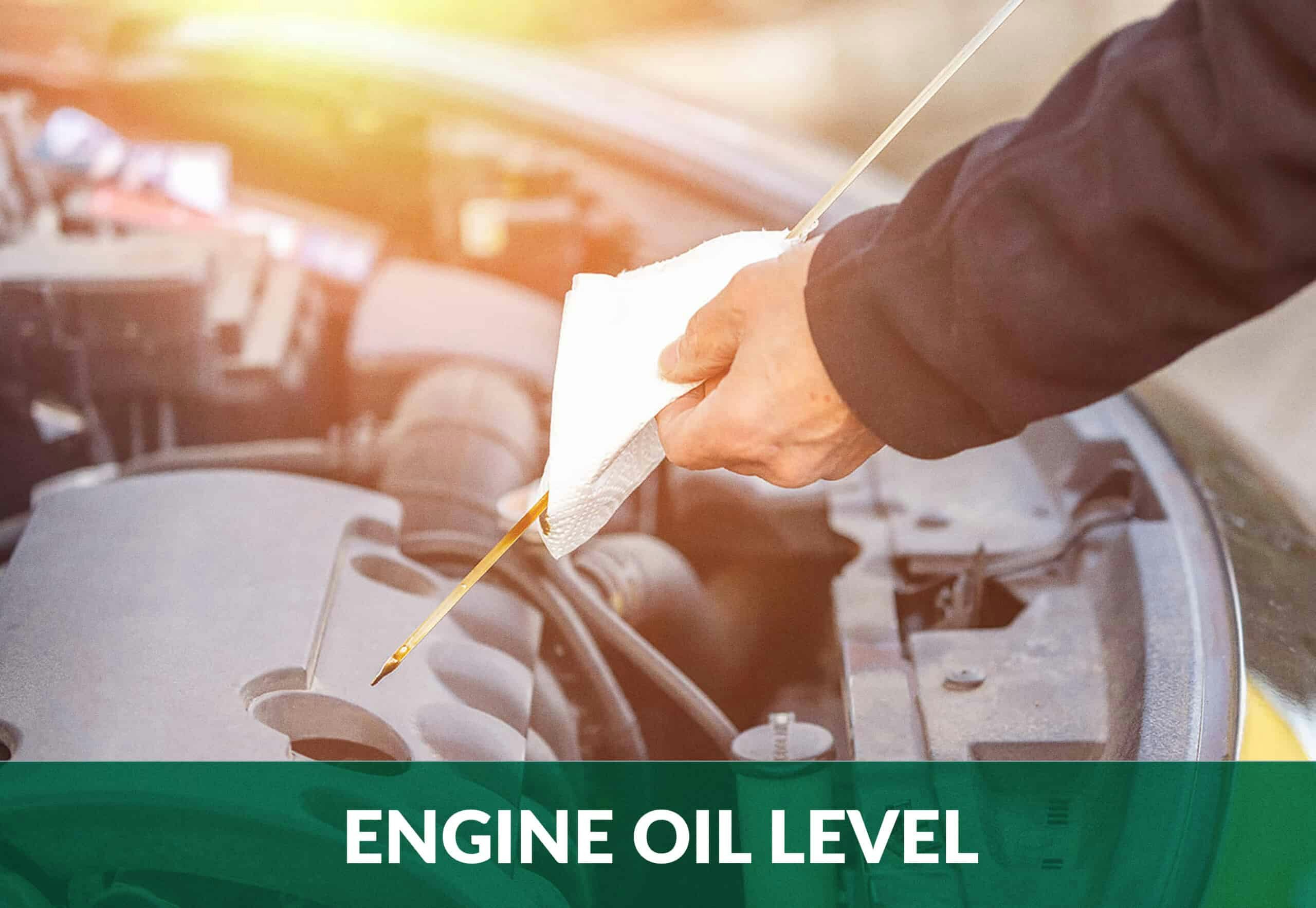
How to Check Your Car’s Engine Oil – A Complete Driver’s Guide
In any car, several fluids are essential to the running of the car, such as the wind washer fluid, car coolant, and engine oil. In this article, we’ll focus on engine oil:
- How to check the engine oil level with a step-by-step guide
- When it’s time to change the oil
- How to fill or change the engine oil
- How to know if the oil is contaminated and has to be changed
- Which engine oil to use: 4/2 stroke engine oil
Why Should You Check the Engine Oil Level?
By checking your oil level you can keep your car’s engine in good shape and avoid unnecessary breakdowns and costly repairs.
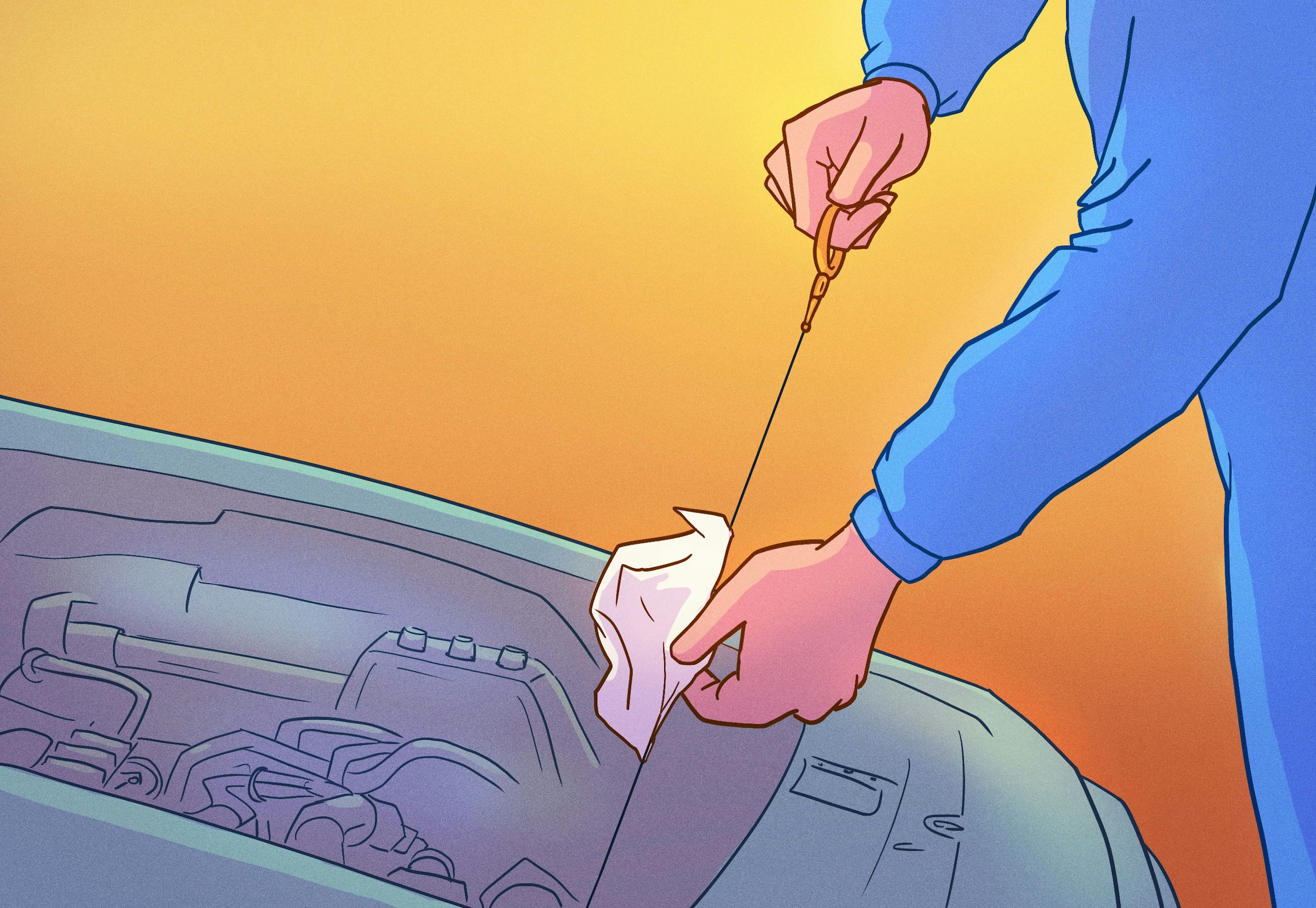
Monitoring and checking your oil level will greatly improve the engine’s performance and reduce the risk of a breakdown. Oil reduces friction in the engine to keep all parts moving smoothly and is essential to the running of the engine. Too little oil in your engine will cause the engine to perform poorly and take damage.
How Often Should You Check the Oil Level?
You want to check your car’s oil at least once a month. Checking the engine oil level in your car is a simple process.
4 Easy Steps to Checking Your Car’s Engine Oil
1. Park your vehicle on a level street.
Parking on a level street is important as your engine oil should be level in its container when you check it. After parking, wait at least 10-15 minutes or until your engine has cooled down before you begin checking your oil level. If you check any fluid while your engine is still hot, you risk severe burns.
2. Locate the oil dipstick in your car.
You can find the oil dipstick by looking for a yellow ring on or next to your oil tank. The location of the oil dipstick will be different if you are driving a rear-wheel drive compared to a front-wheel-drive vehicle, but the yellow ring will look the same.
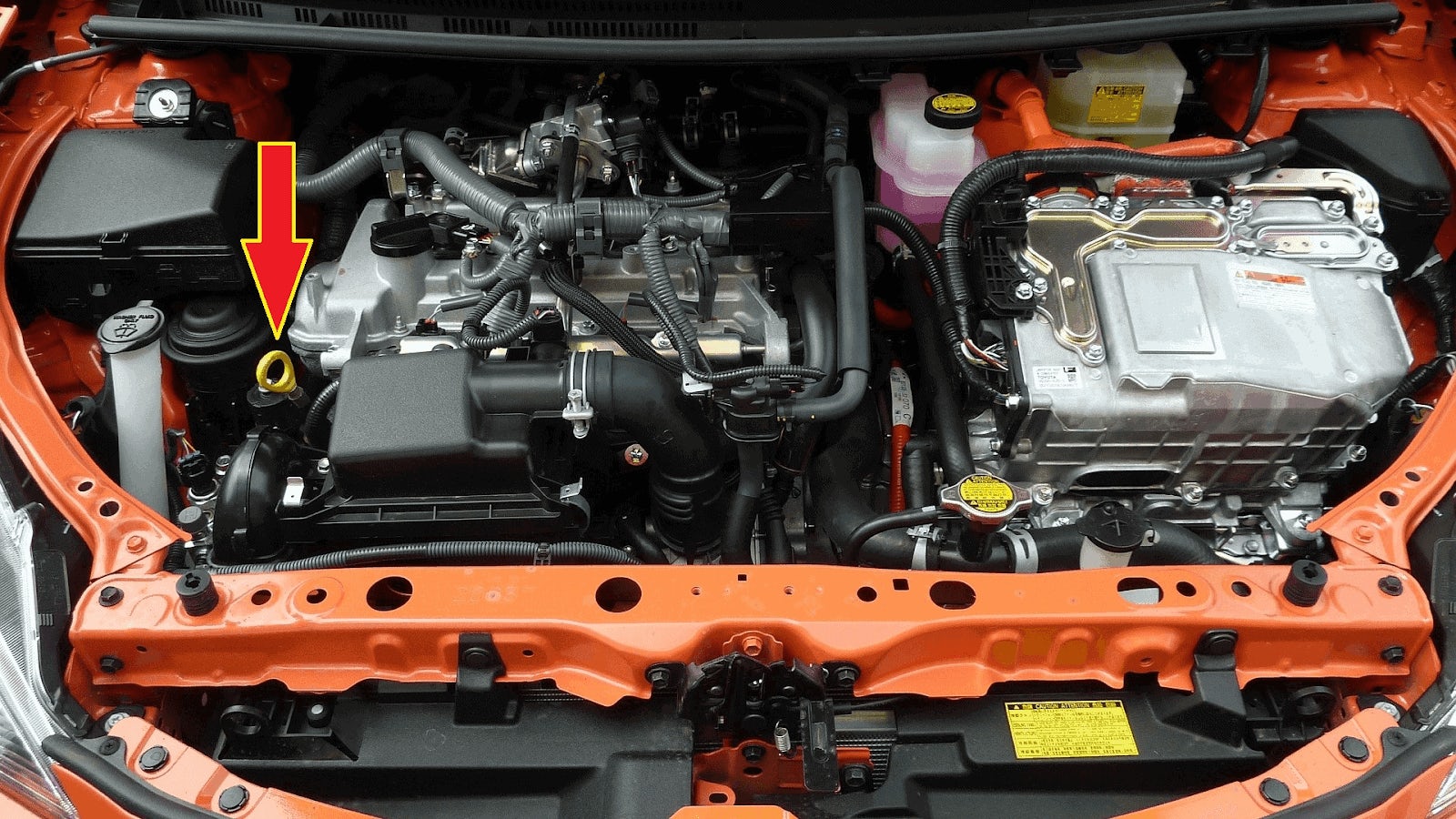
3. Pull out the oil dipstick and wipe it off with a clean rag.
You need to wipe the oil dipstick off before doing the reading as oil can splash onto the dipstick as you drive, making the reading inaccurate. Once wiped off you can re-insert the oil dipstick back into the pipe to get an accurate reading.
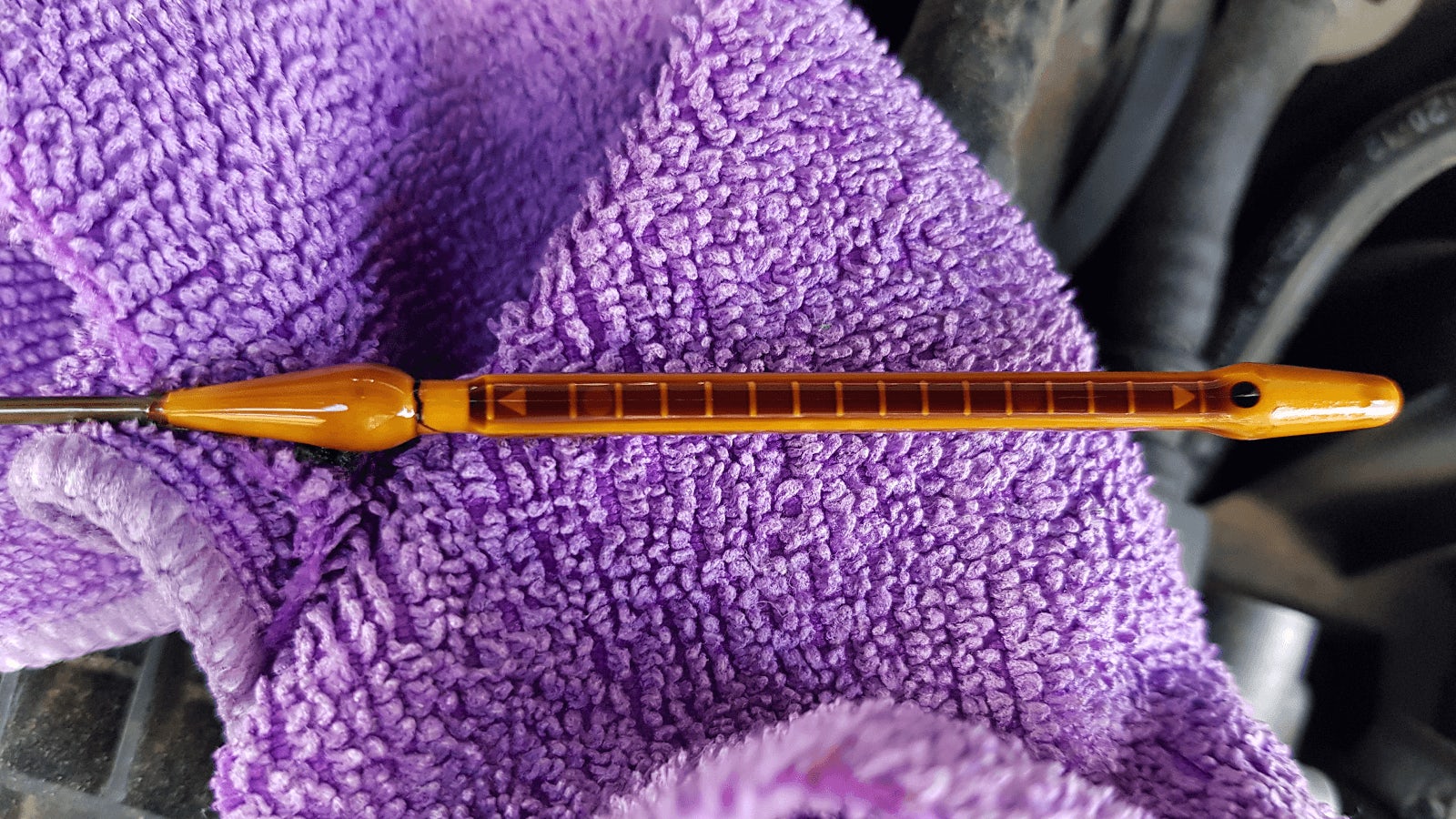
4. Re-insert the oil dipstick and pull it out again.
Insert the oil dipstick back into the pipe and then pull it out again. Note how high the oil film reaches on the dipstick. There are markings on the oil dipstick that indicate when you need to add more oil – the oil film should reach above the indentation or MIN part in the oil dipstick or you need to add more oil.
The picture below shows an oil dipstick. You can see the MIN indentation, the MAX indentation, and the CURRENT OIL LEVEL. The oil level in your engine should be in between the MIN and MAX markings.
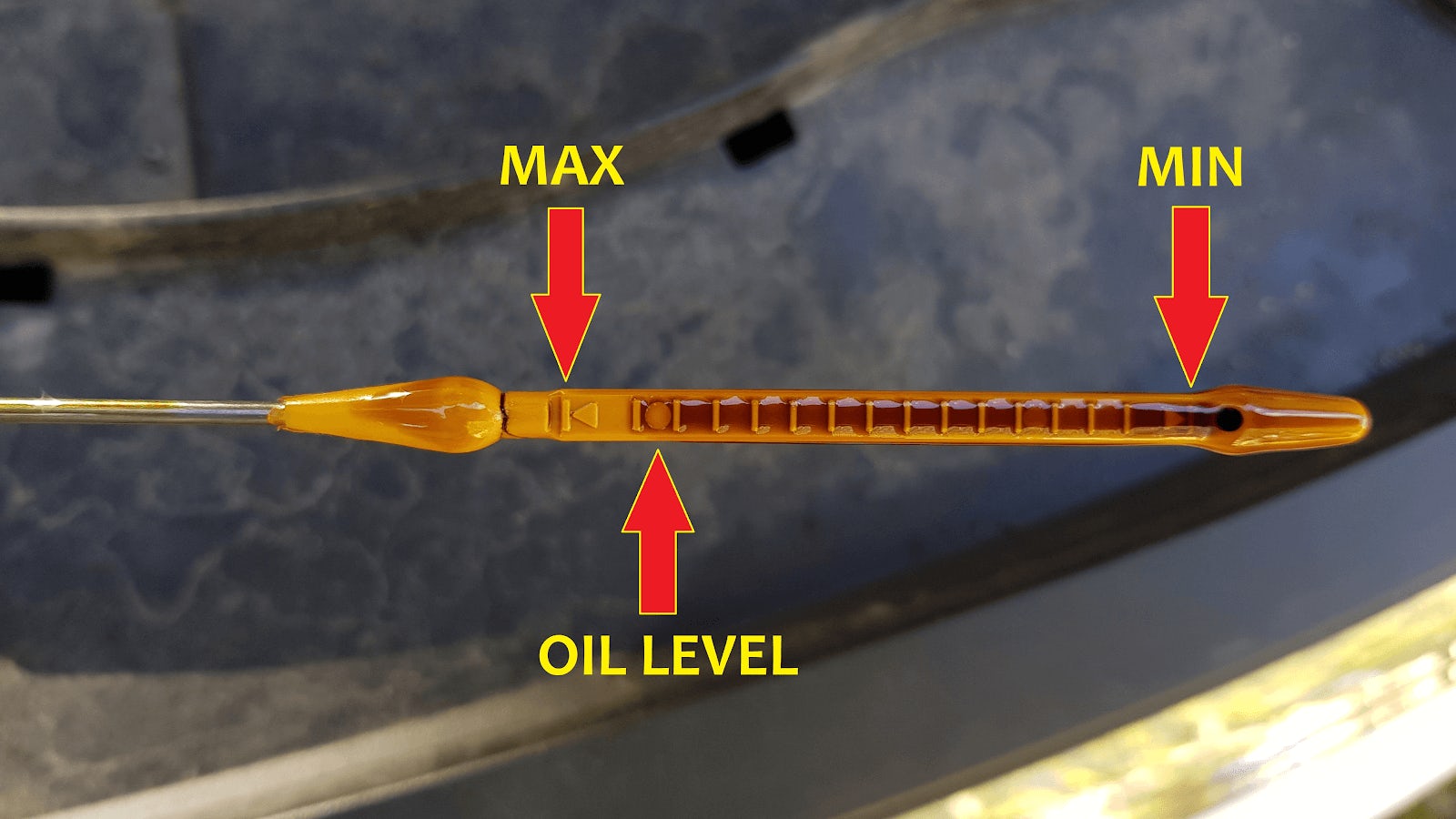
How To Fill Up or Change Engine Oil
When you do end up having to fill up your oil level, look for the lid with the “engine oil” icon. It should be on or next to the engine. Then re-fill gently and apply the same method that you used when checking the oil level to determine when you have filled enough.
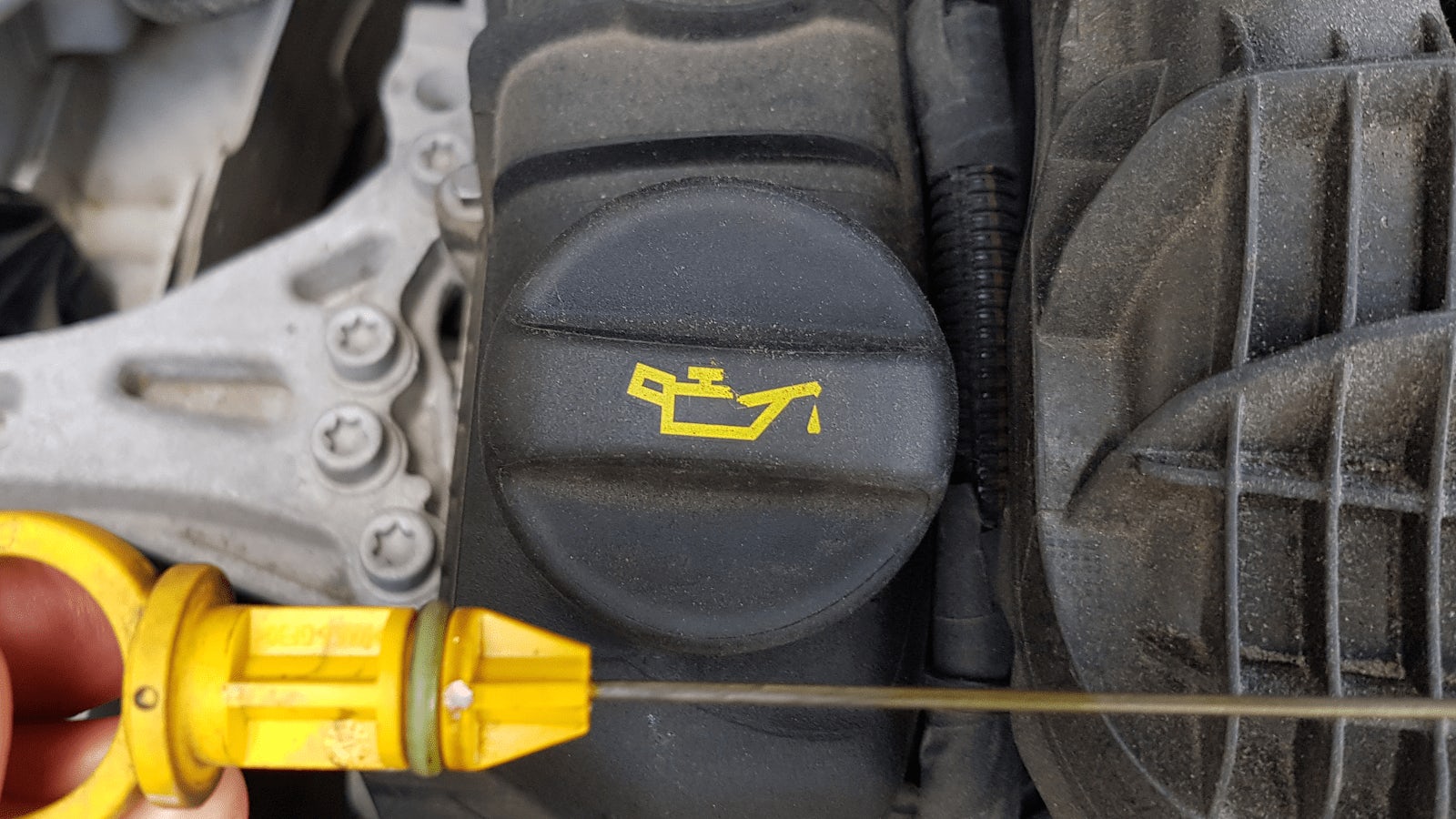
If your engine oil is contaminated and has to be changed, you can empty the engine oil through a drain plug on the bottom of the engine. To reach the plug you may need to crawl under your car.
What Does Contaminated Oil Smell Like?
You also want to smell the oil to make sure it isn’t contaminated by gasoline. If the oil smells of gasoline it’s contaminated and should be changed.
Which Engine Oil to Use
Your engine needs oil that is thin for cold starts, but thick enough when the engine is hot. To accomplish a thin oil at low temperatures but a thick oil for hot temperatures, a ‘multi-grade’ or ‘multi-viscosity’ oil can be used by modern vehicles. Older cars do not run well with these oils and use ‘monograde’ oils instead.
- Modern vehicles typically use multi-grade 5W30 or 5W40 oil.
- Older cars (10 years or older) typically use monograde 10W30 or 10W40 oil.
- High-mileage cars with over 100,000 miles may need up to a 20W50 oil.
4 Stroke vs 2 Stroke Engine Oil
Things get even more complicated when you consider that motorcycle and scooter engines can be divided into two categories: a 4-stroke (4T) and 2-stroke (2T) engines. They require a different type of engine oil as 2-stroke engines require engine oil to be pre-mixed with the fuel. Read the label on the engine oil before you buy it as it will specify if intended for a 2-stroke or 4-stroke engine.
If you need additional driving tips, see the Zutobi driving theory course for other tips on how best to maintain your vehicle.

550+ exam-like questions
All you need to ace your test
Free trial
Recommended articles
Ace your theory test, guaranteed
Want to Be the Top School in Your Area?
- Simple & automated admin
- More time for teaching
- #1 learning materials for students


